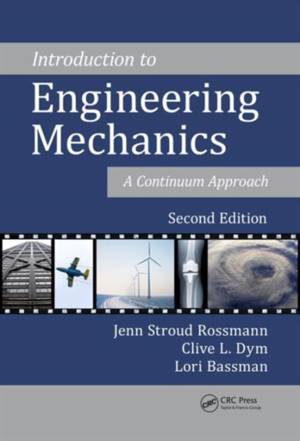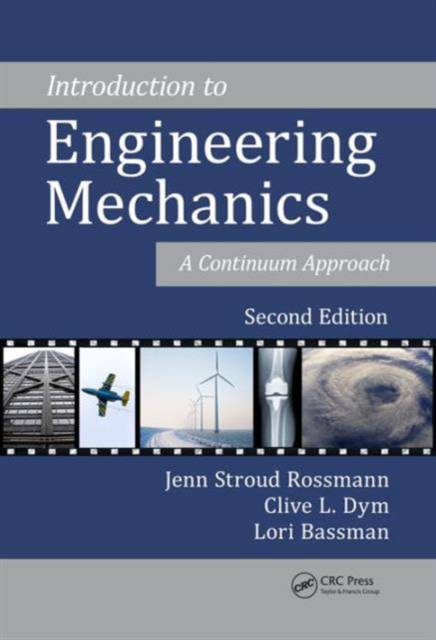
- Afhalen na 1 uur in een winkel met voorraad
- Gratis thuislevering in België vanaf € 30
- Ruim aanbod met 7 miljoen producten
- Afhalen na 1 uur in een winkel met voorraad
- Gratis thuislevering in België vanaf € 30
- Ruim aanbod met 7 miljoen producten
Introduction to Engineering Mechanics
A Continuum Approach, Second Edition
Jenn Stroud Rossmann, Clive L Dym, Lori BassmanOmschrijving
Integrated Mechanics Knowledge Essential for Any Engineer
Introduction to Engineering Mechanics: A Continuum Approach, Second Edition uses continuum mechanics to showcase the connections between engineering structure and design and between solids and fluids and helps readers learn how to predict the effects of forces, stresses, and strains. The authors' "continuum checklist" provides a framework for a wide variety of problems in solid and fluid mechanics. The essence of continuum mechanics, the internal response of materials to external loading, is often obscured by the complex mathematics of its formulation. By gradually building the formulations from one-dimensional to two- and three-dimensional, the authors help students develop a physical intuition for solid and fluid behavior and for the very interesting behavior of those materials including many biomaterials, between these extremes. This text is an accessible first introduction to the mechanics of all engineering materials, and incorporates a wide range of case studies highlighting the relevance of the technical content in societal, historical, ethical, and global contexts. It also offers a useful perspective for engineers concerned with biomedical, civil, chemical, mechanical, or other applications.
New in the Second Edition:
The latest edition contains significantly more examples, problems, and case studies than the first edition.
The 22 chapters in this text:
- Define and present the template for the continuum approach
- Introduce strain and stress in one dimension, develop a constitutive law, and apply these concepts to the simple case of an axially loaded bar
- Extend the concepts to higher dimensions by introducing the Poisson's ratio and strain and stress tensors
- Apply the continuum sense of solid mechanics to problems including torsion, pressure vessels, beams, and columns
- Make connections between solid and fluid mechanics, introducing properties of fluids and strain rate tensor
- Address fluid statics
- Consider applications in fluid mechanics
- Develop the governing equations in both control volume and differential forms
- Emphasize real-world design applications
Introduction to Engineering Mechanics: A Continuum Approach, Second Edition provides a thorough understanding of how materials respond to loading: how solids deform and incur stress and how fluids flow. It introduces the fundamentals of solid and fluid mechanics, illustrates the mathematical connections between these fields, and emphasizes their diverse real-life applications. The authors also provide historical context for the ideas they describe and offer hints for future use.
Specificaties
Betrokkenen
- Auteur(s):
- Uitgeverij:
Inhoud
- Aantal bladzijden:
- 462
- Taal:
- Engels
Eigenschappen
- Productcode (EAN):
- 9781482219487
- Verschijningsdatum:
- 24/03/2015
- Uitvoering:
- Hardcover
- Formaat:
- Genaaid
- Afmetingen:
- 178 mm x 257 mm
- Gewicht:
- 997 g

Alleen bij Standaard Boekhandel
Beoordelingen
We publiceren alleen reviews die voldoen aan de voorwaarden voor reviews. Bekijk onze voorwaarden voor reviews.











